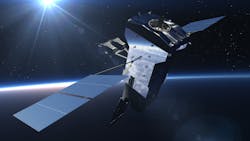Lockheed Martin chooses Raytheon to build second space infrared sensors payload for missile warning system
LITTLETON, Colo. – Spacecraft designers at Lockheed Martin Corp. needed a second infrared sensors mission payload for the Next Generation Overhead Persistent Infrared Geosynchronous Earth Orbit Block 0 missile-warning satellite system - also known as NGG. They found their solution from Raytheon Technologies Corp.
Officials of the Lockheed Martin Space Systems segment in Littleton, Colo., have chosen Raytheon to provide a second NGG mission payload for the third Next Generation Overhead Persistent Infrared (OPIR) Geosynchronous Earth Orbit constellation.
Raytheon and Northrop Grumman Corp. each are on contract to provide one space mission payload for the three-satellite procurement. With this announcement, Raytheon will provide a second mission payload.
Lockheed Martin is under contract with the U.S. Space Force Space Systems Command (SSC) to build three survivable NGG satellites with enhanced missile warning and resiliency capabilities.
Lockheed Martin selected Raytheon and a team of Northrop Grumman and Ball Aerospace to develop mission payload designs, which have completed critical design and are on track to fly on the first two NGG satellites. It has yet to be determined which payload will be aboard the first NGG satellite launched in 2025.
For more information contact Lockheed Martin Space Systems online at www.lockheedmartin.com/en-us/capabilities/space.html, Raytheon Technologies at www.rtx.com, or Northrop Grumman at www.northropgrumman.com.
